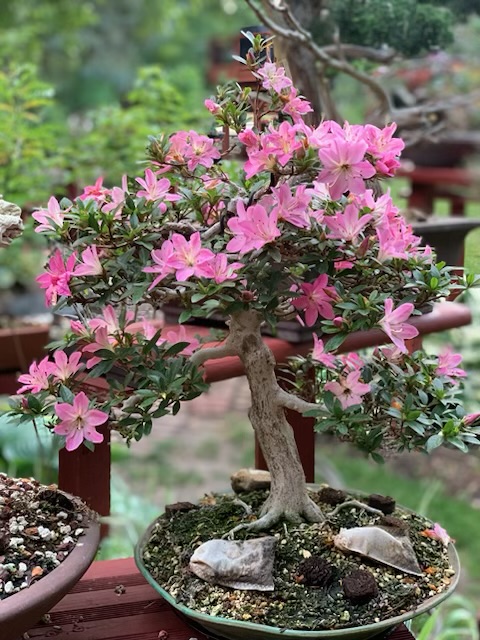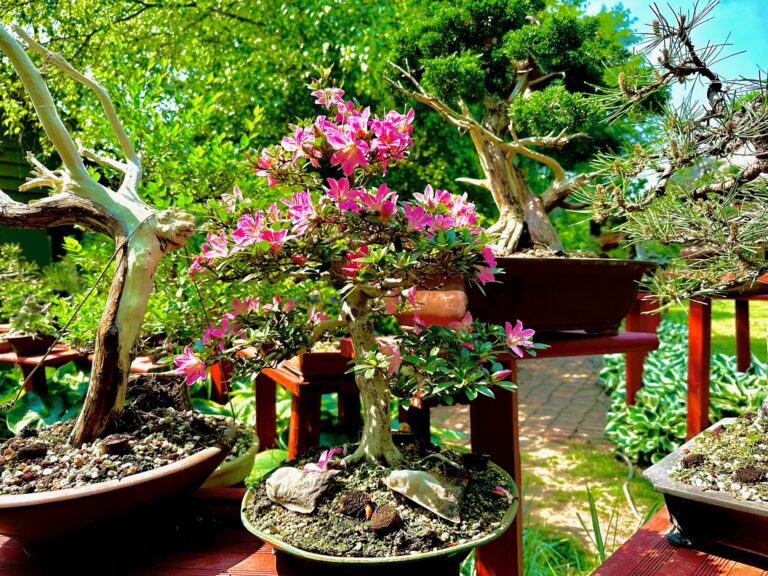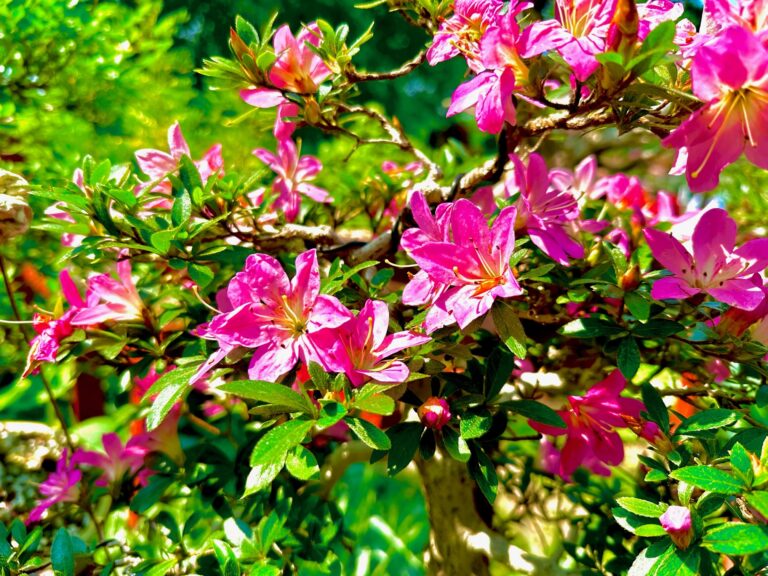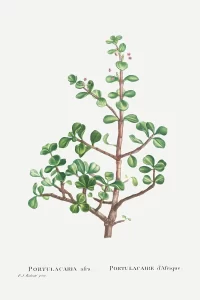
Satsuki Azalea 皐月
Satsuki azalea bonsai—Rhododendron indicum—are as iconic as a Japanese maple or Japanese black pine bonsai.
Members of the huge Rhododendron family are the most flamboyant of flowering shrubs, producing masses of bright flowers in late spring. Many originate from Japan, where these plants have been propagated and hybridized since the 1600s.
The name is derived from the Asian lunar calendar, and it refers to when the tree blooms. The term Satsuki is in reference to the Asian lunar calendar, in particular, to the fifth month. The Japanese gave it that name due to the beautiful flowers that appear at that time.
Satsuki azalea flowers can offer any color and combination of stripes and spots. Because of its flowering beauty and smooth, muscular-looking trunk, the Satsuki azalea is highly prized in the bonsai community. There are over three hundred varieties of hybrids and floral presentations that exist today.
Original strains like Kaho or Osakazuki have the capacity to live over one hundred years and maintain a tremendous amount of strength.
The Satsuki azalea is a basely dominant plant—which means it hinges on the shin (the area in the root system immediately under the trunk) being cared for from the very beginning of cultivation and maintained over time to preserve health. When Satsuki azalea bonsai lose health in the shin, their apex begins to become weak and fail. This can cause the Satsuki azalea bonsai to lose its capacity to become bonsai over time.
Satsuki azaleas will tolerate heat in excess of 100℉ with humidity and 90℉ with low humidity.
Satsuki azalea bonsai can tolerate minor frost and freezes. However, letting your Satsuki azalea completely freeze or endure temperatures below 28℉ is a roll of the dice when it comes to your tree responding in the confined environment of a bonsai container. Below 25℉, you will experience potential burning on the trunk branch loss and damage that will inevitably change the shape of the tree.
Satsuki azalea bonsai respond with a different kind of growth depending on when you prune them in the spring. Pruning is necessary to maintain the health of the tree. Lack of pruning will result in more woody twigging that conducts very little water and causes the branches to become more leggy and weak.
– Pruning in the early spring before the plant begins to grow will result in a few strong shoots emerging from the cut site.
– Pruning in the middle of spring right as the buds around the leaf mass begin to show their soft fleshy green new growth will result in a larger number of smaller, finer twigs around that cut site.
– Pruning later into spring when the azalea has a fully-produced leaf mass will result in an abundance of tiny weak shoots around that cut site.
If you have a fully refined Satsuki azalea and you want it to flower within the year, wait to prune until the tree begins to flower and remove the flower buds as you thin down the branches to a designed length.
It’s not a good idea to do any hard pruning in spring. If you do, there’s a lower chance of flowers appearing in spring. Wait until the blooming period is over before you remove any leaves and perform maintenance on your bonsai.
Satsuki azaleas are typically cultivated in a specialty soil called Kanuma, which is an incredibly soft, acidic, volcanic soil. This soil accommodates the fine, soft, steel wall-like root system that Satsuki azaleas utilize for their water conductivity and nutrient uptake.
Most Azaleas enjoy full sunlight for a few hours in the day, but the Satsuki prefers some dappled shade. Look for a location where the sun catches it in the morning until peak afternoon. Your house wall or an overhanging net will help with shade for the rest of the day.
The only time you should keep a Satsuki Azalea indoors is when it’s winter and too cold outside. In spring and summer, it won’t do too well with limited sunlight and too much shade. Also, it prefers the fresh air it will receive outside.
Chicago area tips:
-repot only in pure kanuma! Do not use any other type of soil. Place moss over the kanuma
-kanuma is extremely dry. Wear protective gloves when repotting and avoid contact with your skin
-the trees are not winter hardy. They must be wintered in a garage or cold house and stay above freezing
-when wintering they require at least 8 hours of light per day. This requires placing the tree near a window in the garage or hanging a grow light over them all winter on a timer if you do not have a window
Sources






